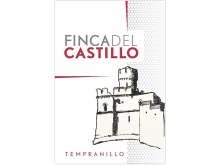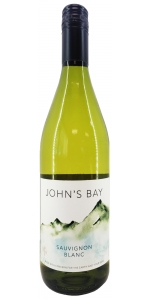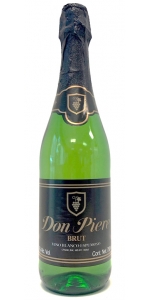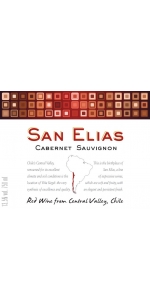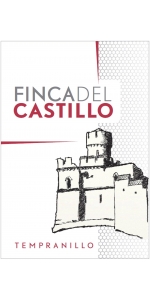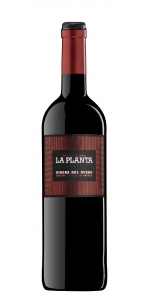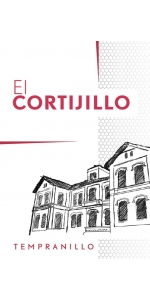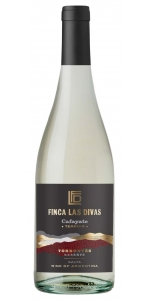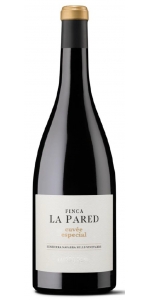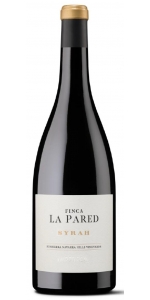Finca del Castillo Tempranillo La Mancha 2023
12 bottles with free shipping for: $156.00
| BUY MORE! SAVE MORE! | ||||||||||||||||
|
| Country: | Spain |
| Region: | La Mancha |
| Winery: | Castillo |
| Grape Type: | Tempranillo |
| Vintage: | 2023 |
| Bottle Size: | 750 ml |
Finca del Castillo Tempranillo La Mancha is made from 30 year old vine Tempranillo (100%).
This pretty little red has a flavor reminiscent of good Cotes du Rhone. Medium bodied, flavorful; hints of raspberry and strawberry. Shows best with picnic fare and grilled meats. Perfect summer red.
The Finca del Castillo Estate
Finca del Castillo means "The Castle's winery" in Spanish. The wine is made by Vinicola de Castilla in Manzanares (Ciudad Real) in an up to date, state of the art winemaking facility (30,000 sq meters/300,000 sq ft) with the capacity of producing 2 million liters and holding 8,000 barrels. Founded in 1976, it's a privately owned corporation (not a co-op). Since its inception, a DO La Mancha pioneer in fruit-driven young wines, barrel-aged reds and varietals. More than 600 international awards for their wines.
Production by type: 65% Red wine, 35% White and Sparkling.
Export sales represent 50% of the production. The winery exports to 22 countries.
Capacity is 20,000,000 liters, currently running at 12,000,000 liters of yearly production.
This Bodega likes to promote their Crianza wines.
The Finca del Castillo Vineyards
The winery and the vineyards are all located in the "La Mancha" DO. Tempranillo is the primary grape varietals and it represents 70% of the total production.
They grow the following 5 red grape varietals:
· Tempranillo
· Cabernet Sauvignon
· Merlot
· Petit Verdot
· Syrah
They also grow the following 6 differents types of White grape varietals:
· Verdejo
· Airén
· Macabeo
· Sauvignon Blanc
· Moscato
· Chardonnay.
The wines are all produced with grapes they only grow themselves. They own 50 hectares, and they currently rent another 550 hectares (long term leasing contract).
Johns Bay Sauvignon Blanc is made from 100 percent Sauvignon Blanc.
This elegant dry white wine is bursting with delicious tropical fruit aromas and delicate floral notes. The palate is clean, zesty and refreshing, full of ripe citrus flavors and crispy acidity.
John's Bay is a custom wine made for Kysela Pere et Fils.
Avatar Malbec is 100% Malbec.
Aged in 100% French Oak barrels for 4 months and then 6 months in the bottle beofre release
Presents a vibrant red color with glints of bordeaux. Great aromatic intensity. It expresses in a very fresh way, with red fruits and a remarkable sweetness. In the mouth it’s balanced with round and sweet tannins, rich and with a marked acidity.
Coming from Agrelo district.
Average of the vines is 25 years old.
Soil type: Alluvial and sandy soils with a big amount of rocks just besides the Mendoza river. This is one of the most prestigious terroirs in Argentina.
Winemaking: Crushing, destemming and maceration pre-fermentative at 11ºC for 24 hours. Alcoholic fermentation in tanks. 4 weeks of skin contact maceration. Aged in French oak barrels for 4 months, Malolactic fermentation in contact with fine lees.
Wine was slightly filtered before bottling.
The grapes for this sparkling are sourced from high elevation areas throughout Spain. Don Piere offers a crystal clear pale yellow color, small and abundant bubbles of great finesse and elegance. The nose shows light and pleasant citrus and fresh fruit aromas. Well-balanced and refreshing on the palate with fruity flavors, good acidity and pleasant texture.
mixed in a Bellini. Ideal sparkling to share with friends and celebrate.The wine is a great match with appetizers, grilled fish, or desserts and cocktails,
Siegel San Elias Cabernet Sauvignon is made from 100 percent Cabernet Sauvignon.
Fresh and delicate cassis tones, a great structure. Draw the cork half an hour before serving and serve at room temperature.
Smooth and fruity on the palate, the wine goes well with pasta, salads.
Finca del Castillo Tempranillo La Mancha is made from 30 year old vine Tempranillo (100%).
This pretty little red has a flavor reminiscent of good Cotes du Rhone. Medium bodied, flavorful; hints of raspberry and strawberry. Shows best with picnic fare and grilled meats. Perfect summer red.
Arzuaga Ribera del Duero La Planta 2023 is 100% Tempranillo.
The wine has been crafted from grapes cultivated at La Planta estate, owned by Arzuaga Navarro’s family in Quintanilla de Onésimo, the heart of Ribera del Duero. The soil is clay-calcareous and the subsoil is pure limestone at one meter under the surface. The vineyard altitude is 911 meters above sea level. These specific conditions provide distinct features of the wine.
The wine boasts a deep violet red color. Clean and bright with a range of red fruits (raspberry and cherry) that dominate with a high aromatic intensity, joined by balsamic, cacao, coffee, and roasted tones. Fresh, elegant, easy, and balanced in the mouth with a lightly sweet, toasted, and pleasant aftertaste.
Pairs best with fried fish, sausage, and white meats such as roasted poultry.
Review:
The 2023 La Planta is 100% Tempranillo and was aged for six months in oak. Floral in character, it offers rosewood and candy, followed by candied cherry. Dry and slightly indulgent, with grippy tannins and a juicy core, the 2023 vintage brings extra charm and palate energy compared to 2022. - Joaquín HIDALGO"
- Antonio Galloni's Vinous (June 25th 2025), 90 pts
El Cortijillo Tempranillo La Mancha is made from 100% Tempranillo
Up front aromas of raspberry and cherry fruit, medium to light weight, Rhône wine in character, cherry fruit flavors, followed by bright acidity. Reminds of a mythical cross between a Pinot Noir and a Côtes-du-Rhône. Pleasant and fun, bistro red.
Made from 30 year old vine.
Delicious with Paella, hamburger or pasta. But also great with grilled vegetables. (bell pepper, eggplant, etc)
Finca las Divas Torrontes Reserve Cafayate is 100% Torrontes.
Named in honor of different divas because of the detailed attention to each varietal and plot, consequence of the terroir, origin of the Andes slopes.
Intense and bright yellow with gold hues. On the nose it offers delicate aromas, floral notes, orange peel and subtle hints of vanilla resulting from it aging on oak. On the palate it is a wine with character, with exotic and intense flavors, good acidity, with good structure and weight; fresh and balanced with a long persistence.
Pairs with fish, seafood, risotto, pasta, sushi, lamb and hard cheeses.
Review:
"The only wine in the Riglos range that doesn’t come from Gualtallary, this is a foudre fermented and aged Torrontés from Salta that’s made in the north of Argentina. Elderflower, tangerine and passion fruit flavours combine appealingly on the palate here, supported by fresh acidity and a touch of wood spices. 2025-27."
Tim Atkin (April 2024), 90 pts
Finca La Pared Cuvee Especial is made from Graciano & Syrah.
The Cuvee Especial is a Graciano and Syrah blend aged in oak barrels that produces a full-bodied, fresh wine of great complexity and long lasting finish.
Review:
"A deep, brooding nose with lots of fine oak spices and hazelnuts that adorn the blackberries and violets. Succulent and bright on the palate, with caressing, silky tannins dialing into the black and blue fruit. Quite long and subtle. Delicious now, but can hold, too."
- James Suckling (June 2022), 94 pts
Finca La Pared Syrah is made from 100 percent Syrah.
Finca La Pared Syrah shows an expressive nose of dark fruit aromas and a mineral character.
Intense, direct, playful. Balance of forces.
Machine harvested at night. Grapes with great concentration. Prefermentation cold maceration (cold soak) for three days. Fermentation and maceration are carried out in small stainless steel tanks, combining pumpovers and délestages The process is prolonged for approximately 20 days with gentle extractions. We gently press the grapes and the wine carries out its malolactic fermentation in even smaller stainless steel tanks. When the wine has naturally lost the thickest suspended solids, we transfer it to oak barrels. We chose American oak barrels that enhance the freshness of the wine and its refinement. The wine is aged for 12 months in the same barrels without racking. It isbottled after light filtration without fining.
Review:
"Blackberries, ground pepper, violets, and some gamey, bouquet garni-like notes all emerge from the 2021 Syrah, a medium to full-bodied, deep, rich, wonderfully layered Syrah that seems to be a hypothetical blend of a California Syrah with an Hermitage. Drink bottles through 2031."
- Jeb Dunnuck (Importer Highlight: Fran Kysela ; July 2024), 95 pts
- back
Wachau Riesling is dry and often defined by high levels of dry extract (due to a lengthy ripening period) and a pleasing freshness (due to dramatic temperature swings between day and night). Sedimentary soils of sand and stone give Kirchweg Riesling a dense mineral texture and fine fruity flavors.
Review:
Welcome to the dark side of Wachau dry riesling! Deep and delicately spicy nose that’s full of mystery. Incredible concentration and massive wet stone character on the very precise medium-bodied palate. Radical mineral energy and garden herb freshness at the enormously long and tightly-focused finish.
-James Suckling 98 Points
Altesino Brunello di Montalcino Montosoli is made from 100 percent Sangiovese.
One of the most sought after wines from Montalcino, Montosoli is consistently a blockbuster red. Its intense ruby red color tends towards elegant garnet with age. On the nose, it shows a complex personality with a delicious blend of black cherry, raspberry, violet, licorice, vanilla and black pepper. Extremely enticing, opulent and elegant on the palate, with a warm, long-lasting finish, Montosoli is a wine for special occasions.
Pair this wine with beef bourguignon and stroganoff, lamb shank, and roasted rabbit.
Review:
A juicy and lightly austere young red with blackberry, cherry and bark character on both the nose and palate. It’s medium- to full-bodied with chewy tannins that soften at the end, but still make your mouth pucker. Give this two or three years to soften. Best after 2027.
-James Suckling 97 Points

